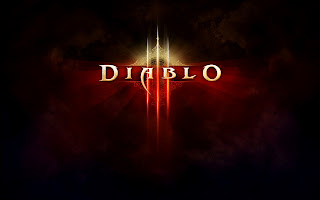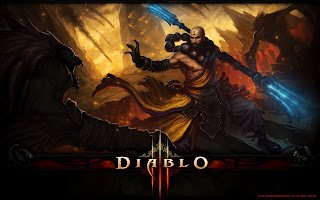 4th International Tourism Cartoon Competition 2013, Eskisehir - Turkey
4th International Tourism Cartoon Competition 2013, Eskisehir - TurkeyInternational Tourism Cartoon Competition is held with the cooperation of Anadolu University Research Center for Caricature Art, Association of Tourism Writers and Journalists (TUYED) and Anatolia: A Journal of Tourism Research. The objective of the competition, which was first held in 2009, is to examine tourism, which is one of the biggest sectors in the world, with its various dimensions. Also, the competition aims to put forward cartoonists’ aspects in terms of travelling population’s experiences and relations during their travel. In this respect, the main objective of this competition is to assess such topics, developments and experiences within the tourism industry as accomodation, transportation, food and beverage, recreation, sightseeing, museums, envirenment, tourist-resident relationships, from cartoonists’ point of view.
Competition is held annually and is open to all cartoonists from all over the world, both amateur and professional. Nearly 100 submitted works which get to the final elimination take place in the Cartoon Book and the reward ceremony of the competition is held in İstanbul.
Theme: Resident* and tourist relationship
The topic of the Fourth International Tourism Cartoon Competition is resident (indigenous people) and tourist (vacationist) relationship.
Submission Guidelines
•The competition is open to all amateur and professional cartoonists.
•Each performer is allowed to submit maximum three works.
•The cartoons submitted to the competition may be prepared as original drawings, digital printings or computer printouts. The drawing technique is open-ended. Drawings may be colorful or black and white. On the other hand, performers are required to put signatures on their drawings.
•Drawings must be minimum A4 (21x29,7cm) and maximum A3 (29.7x42.0cm) size and potential deformation during the sending process should be avoided. Participants are responsible for any deformation caused by the posting procedure.
•Participants must write their names, surnames and addresses behind their drawings. Also, they must complete the Participant Information Form placed under submission page and send it together with their drawings.
•Cartoons sent may be of the ones previously published somewhere but previously awarded cartoons are not allowed to submit.
•Cartoons submitted for selection will be able to be printed in Anadolu University, Anatolia: A Journal of Tourism Research, Association of Tourism Writers and Journalists and in other printed materials of this organization such as books, catalogs, brochures, postcards, web sites and posters. All rights for any other publishing except these belong to the owner of drawing.
•Some selected part of the cartoons submitted for selection will be published in the album. Cartoonists whose drawings published in this album will be sent a copy of the album.
•Regardless of award-winning or taking place in the album, all the cartoons submitted for selection will not be returned and will be achieved in The Anadolu University Museum of Cartoon Art.
•All the cartoonists participated in the competition are implied to agree on the conditions and regulations of the competition.
•Award ceremony will be organized in April 2013 in Istanbul.
•Cartoons can be sent by way of postal service or Cartoon Submission system.
•Submission deadline is 18 January 2013.
Awards
The Grand Award: All inclusive holiday in a five star hotel in Turkey (7 days, 2 persons)
The Second Award: All inclusive holiday in a five star hotel in Turkey (6 days, 2 persons)
The Third Award: All inclusive holiday in a five star hotel in Turkey (5 days, 2 persons)
Professor Atila Özer Recognition Award: All inclusive holiday in a five star hotel in Turkey (7 days, 2 persons)
5 (Five) Mentions.
Selection Committee
Abbas NAASERI Cartoonist, Iran
Hüseyin ÇAKMAK Cartoonist, The Cyprus President of the Federation of Cartoonists Organizations (FECO)
Yoshiaki YOKOTA Cartoonist, The Japanese President of the Federation of Cartoonists Organizations (FECO), Japan
Eray ÖZBEK Cartoonist, Turkey
İbrahim YAZAR Ministry of Tourism and Culture, Turkey
Fehmi KÖFTEOĞLU Tourism Journalist, www.turizmgazetesi.com, Turkey
Osman Nihat AYDOĞAN General Secretary of Association of Tourism Writers and Journalists, Turkey
Bülent ÇELİK Cartoonist, Turkey
Nazmi KOZAK Editor of Anatolia: A Journal of Tourism Research, Anadolu University, Turkey
Mehmet KAHRAMAN Cartoonist, Turkey.
Important Dates
First Announcement: May 2012
Deadline for Submission: 18 January 2013
Meeting of the Selection Committee: 25 January 2013
Notification of Winners: March 2013
Award Ceremony: April 2013.
Contact
For Further Information
Nazmi KOZAK, Ph.D.
Anadolu University,
School of Tourism and Hotel Management,
Yunus Emre Campus,
26470 Eskisehir/TURKEY
Tel: +90 (222) 335-0580/2133
Fax: +90 (222) 335-6651
Gsm: +90 (532) 286-7584
E-mail: nkozak@anadolu.edu.tr
Postal Address
Volkan GENCE
Anadolu University,
Eğitim Karikatürleri Müzesi,
Akcami Mah., Malhatun Sokak, No: 6,
Odunpazarı, 26030 Eskişehir/TURKEY.
--------------------------------------------------------------------------------
*Resident who living in a place for some length of time.
( Source: http://www.tourismcartoons.com/?p=1&l=en ).
Previous competitions .

























.jpg)


.jpg)






